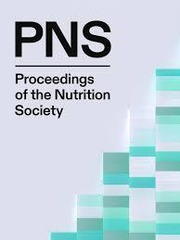No CrossRef data available.
Article contents
HFSS and NOVA classification of foods: similarities and differences between these scores in the UK food supply using myfood24 data
Published online by Cambridge University Press: 09 October 2025
Abstract
Current use of the food classifications: High in Fat, Salt and Sugar (HFSS) and NOVA (a scheme for food processing) for public health policy is challenging. HFSS-based policies focus on measurable nutrient content. NOVA score 4, Ultra Processed Foods (UPF) does not completely overlap with the HFSS score making integration of the two scores problematic. Analysis of the National Diet and Nutrition Survey found only just over half of foods consumed were classified as both HFSS and UPF(1). Our objective was to explore the overlap in HFSS and NOVA scores in a large, branded UK food composition database from myfood24. Identifying food categories where there was agreement and disagreement between classifications.
The myfood24 branded food composition database uses back of pack nutrition information per 100g product to calculate HFSS and NOVA. HFSS classification used standard algorithms(2). NOVA classifications were defined from the NDNS source(3). Scores were allocated to each item based on their ingredient decks. Some assumptions were made across all categories such as items with preservatives were given NOVA score of 4. For items where ingredient decks are not published online, NOVA scores were assumed based on similar items in the database. Food categories and nutritional content of products were compared by both HFSS and NOVA score.
89,496 branded foods had both HFSS and NOVA scores calculated. 40,032 (45%) foods were classified as being both HFSS and NOVA4. 36,256 (41%) of foods were classified as non-HFSS but NOVA4. 8,130 (9%) of foods were non-HFSS and NOVA1 (minimally processed) and 1,189 (1%) of foods were HFSS but NOVA1. Food categories with the largest disagreements between classification as non-HFSS but NOVA4 were canned/tinned foods (28%, n=192); fish/seafood (16%, n=173); fruit juices/smoothies (78%, n=406); nuts/seeds (18%, n=157); pulses (18%, n=73). Food categories with majority agreement between scores, non-HFSS and NOVA1 were fruits, pulses, rice/pasta, vegetables/potatoes. Food groups with both HFSS and NOVA4 as the majority classification were bread, breakfast cereals, cakes/sweet bakery, canned/tinned foods, confectionary, dairy/eggs, fried food, jams/honey, meat/poultry, pies/pasties, pizza/pasta, prepared meals, savoury snacks, soft drinks/squash, soups/salad/sandwich. Nutritional composition varied between classification group. HFSS and NOVA4 had nutrients/100g which were all higher than non-HFSS and NOVA4. Mean energy of 348 v. 144kcal/100g, protein 9 v. 7g/100g, carbohydrates 37 v. 17g/100g, total sugar 19g/100g; fat 18 v. 5g/100g respectively.
HFSS and NOVA4 both tend to classify foods with high energy density. But some non- HFSS food categories, with very differing nutritional compositions are classified as NOVA4. Understanding where the differences and similarities lie between the scores can help interpret epidemiological research and develop public health policy to improve the quality of the UK diet.
Information
- Type
- Abstract
- Information
- Proceedings of the Nutrition Society , Volume 84 , Issue OCE4: Nutrition Society Conference 2025, 1-2 July 2025 , August 2025 , E292
- Copyright
- © The Author(s), 2025. Published by Cambridge University Press on behalf of The Nutrition Society


